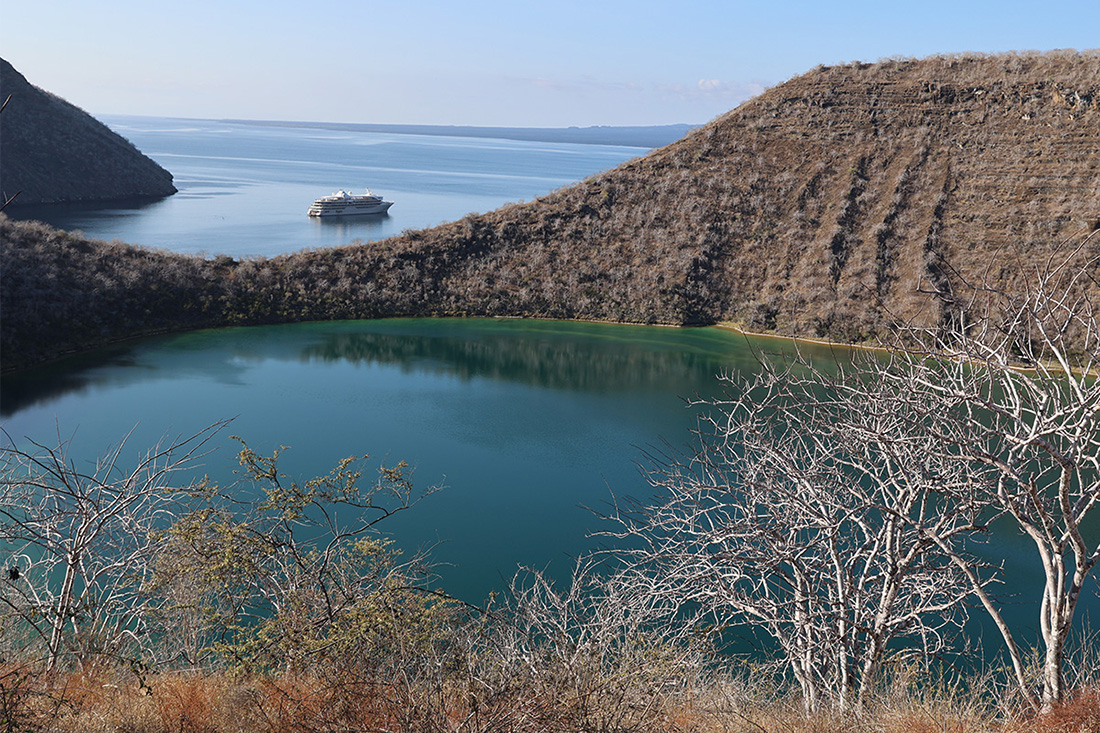Tagus Cove and Darwin Lake in the Galapagos Islands are among the most gorgeous landscapes in all of the archipelago. Sadly, the cove is also the only place we know of where the beauty of the Galapagos is marred by graffiti. Yes, spray-painted and hand-carved graffiti. Despite that, though, a hike to the summit and the panoramic views of Darwin Lake are more than worth the trip. Here are some of our best photos from a recent morning hike at Tagus Cove and Darwin Lake in the Galapagos Islands, home to a forest of Palo Santo “incense trees,” finches and over 100 years of graffiti.
where are Tagus Cove and Darwin Lake located?
Tagus Cove is located on the western side of Isabela Island in the Galapagos Islands archipelago. It is surrounded by a steep rocky coastline, and its protected topography has made it a prime refuge for ships, yachts and pirates for centuries.
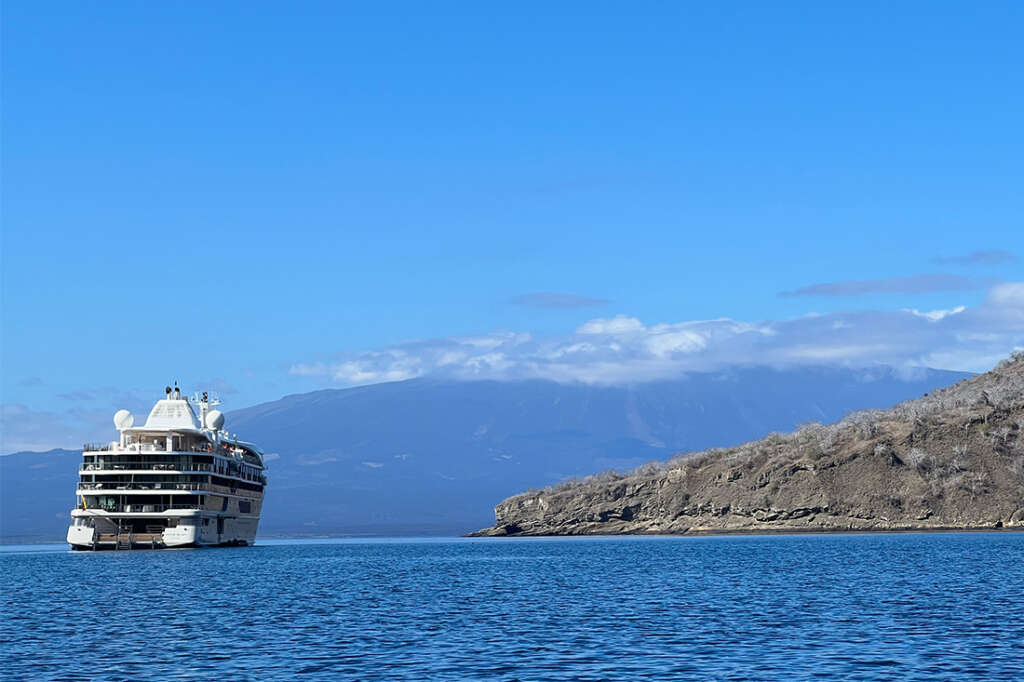
Silversea Silver Origin at Tagus Cove in the Galapagos Islands. Photo © Dandelion Chandelier.
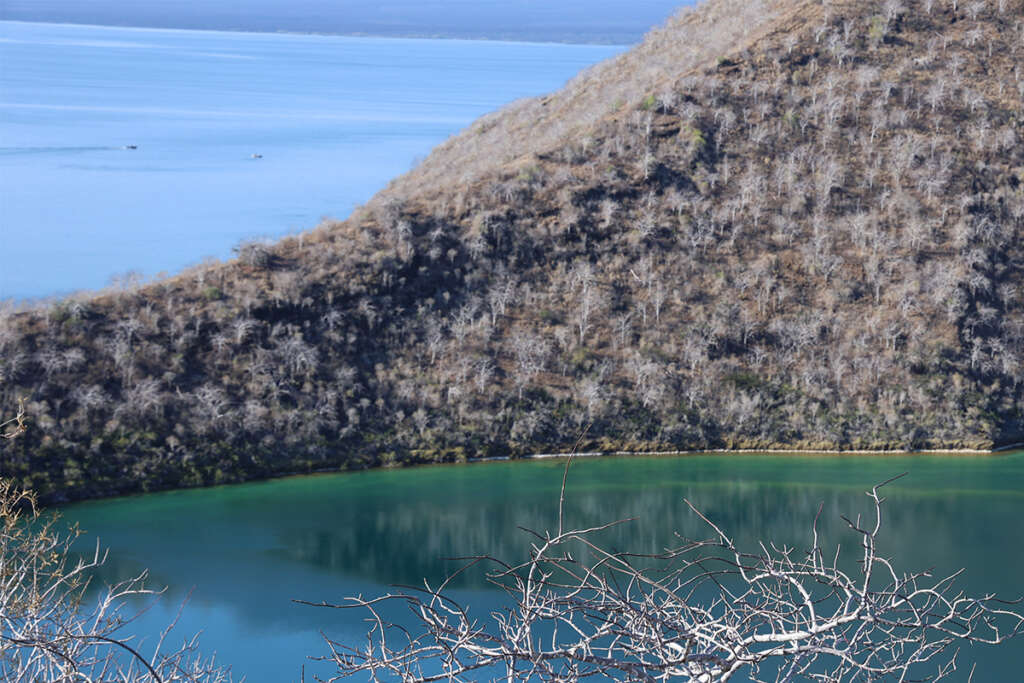
Photos of Darwin Lake and Tagus Cove in the Galapagos Islands. Photo © Dandelion Chandelier.
The cove is named for the British frigate HMS Tagus, which visited the Galapagos Islands in 1814. It’s the only place where you’ll find actual graffiti on the cliff walls. Some are carved, but most are painted, including one mark left by a film crew led by Walt Disney, who was making a documentary about the Galapagos.
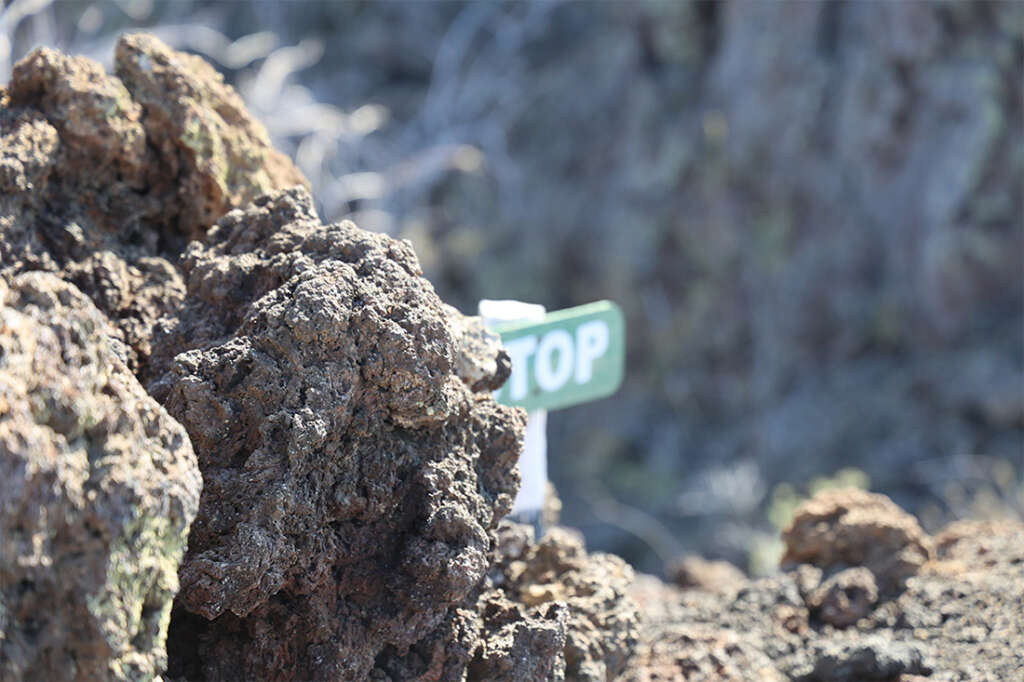
Photos of Darwin Lake and Tagus Cove in the Galapagos Islands. Photo © Dandelion Chandelier.
Galapagos penguins and Flightless Cormorants are plentiful in the waters around the cove, and the series of small caves along the shoreline make for a perfect place to see the penguins nesting. Blue-footed Boobies perch high above a massive cave along this shoreline.
highlights of a hike to the summit at Tagus Cove
The landing at Tagus Cove features a trail that winds to the top of a “spatter cone” that was once part of an active volcano. It rises from sea level to 328 feet. The first part of the climb is on a wooden staircase with about 135 stairs.
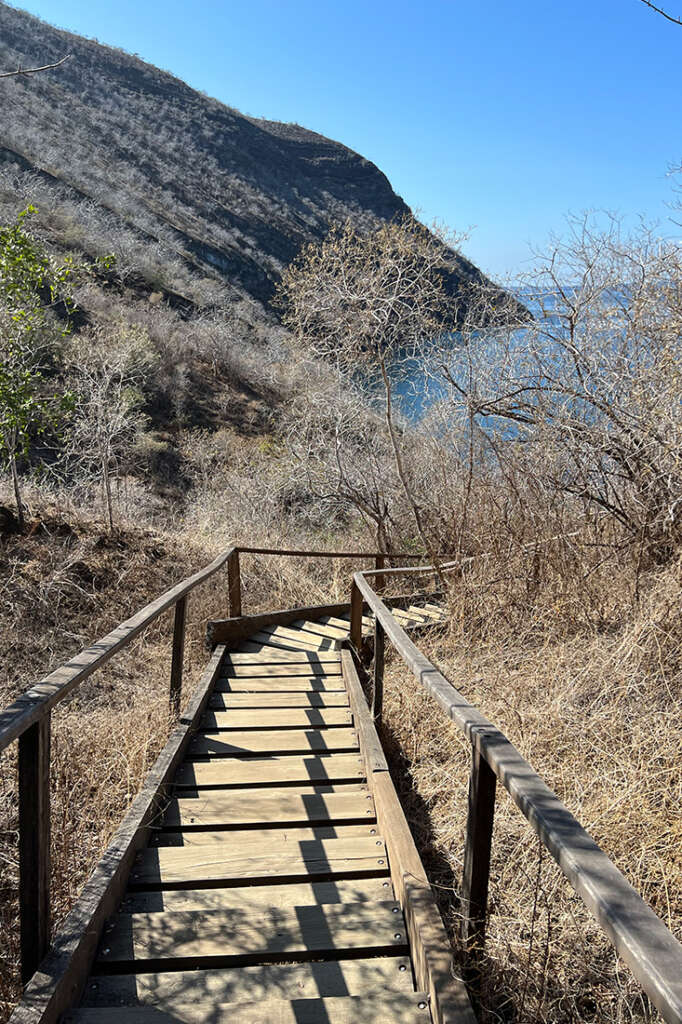
Hike at Tagus Cove in the Galapagos Islands. Photo © Dandelion Chandelier.
From there on in, though, its all rock, sand and soil. And a trail that winds its way inexorably toward the summit.
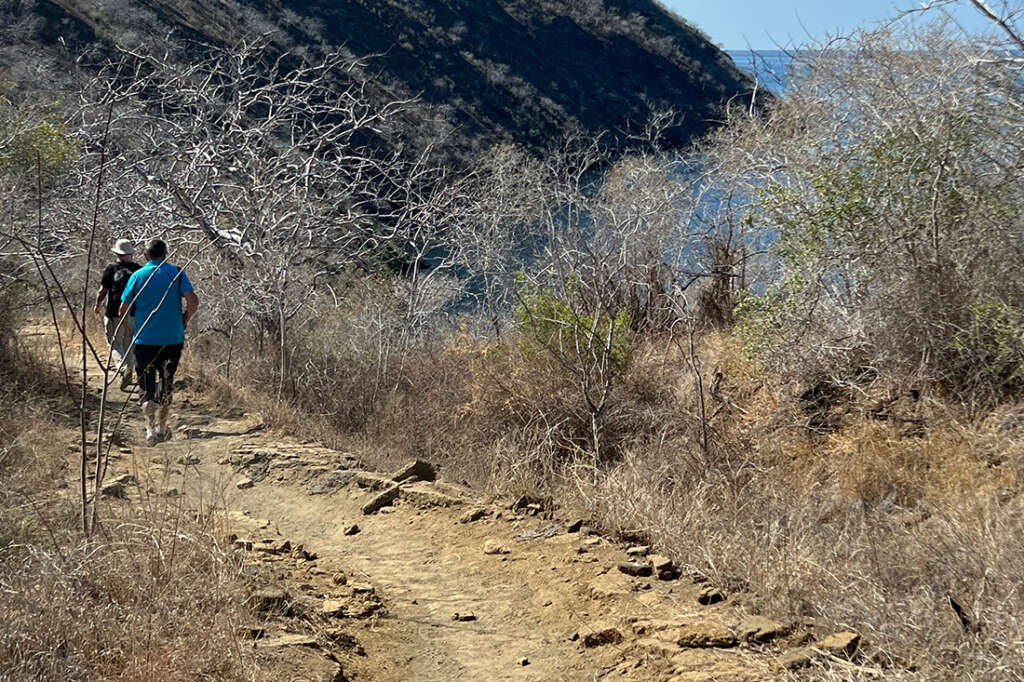
Hike at Tagus Cove in the Galapagos Islands. Photo © Dandelion Chandelier.
Crabs
While the views are the most spectacular part of a visit to Tagus Cove, there’s also wildlife to spot. For example, a colony of crabs greeted us upon arrival at the cove.
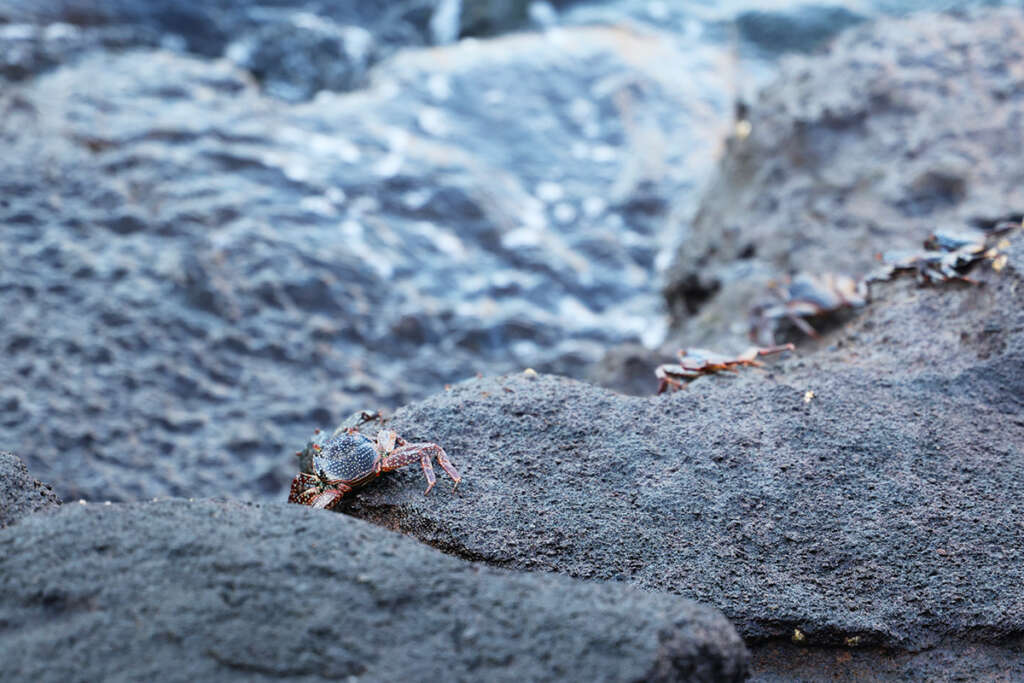
Sally Lightfoot crabs at Tagus Cove in the Galapagos. Photo © Dandelion Chandelier.
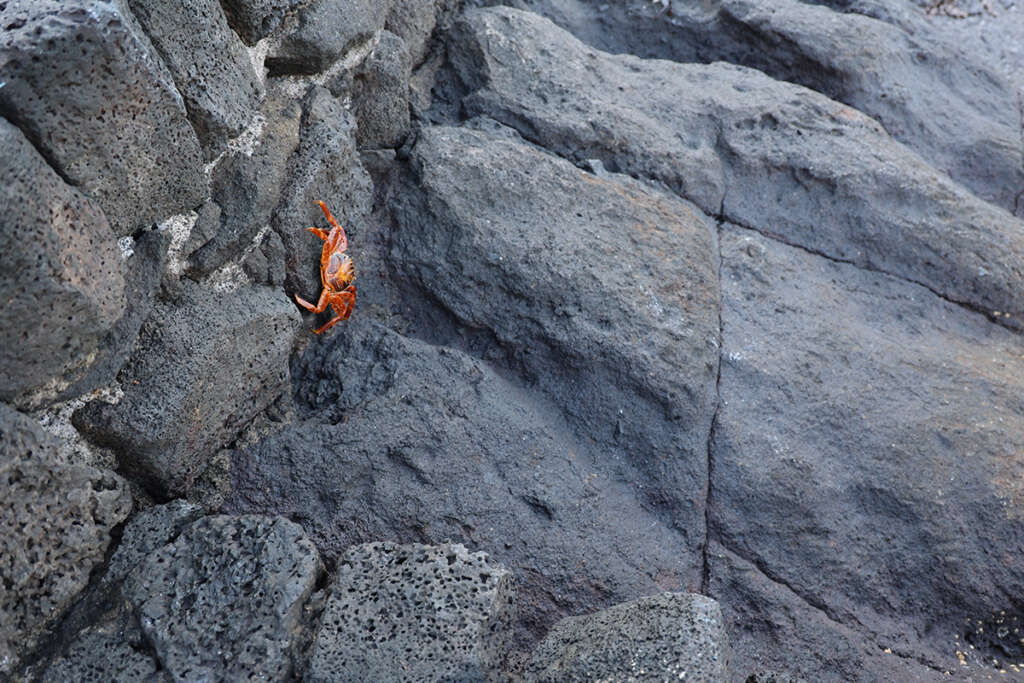
Photo © Dandelion Chandelier.
Large and multicolored, they made for a dramatic welcoming party.
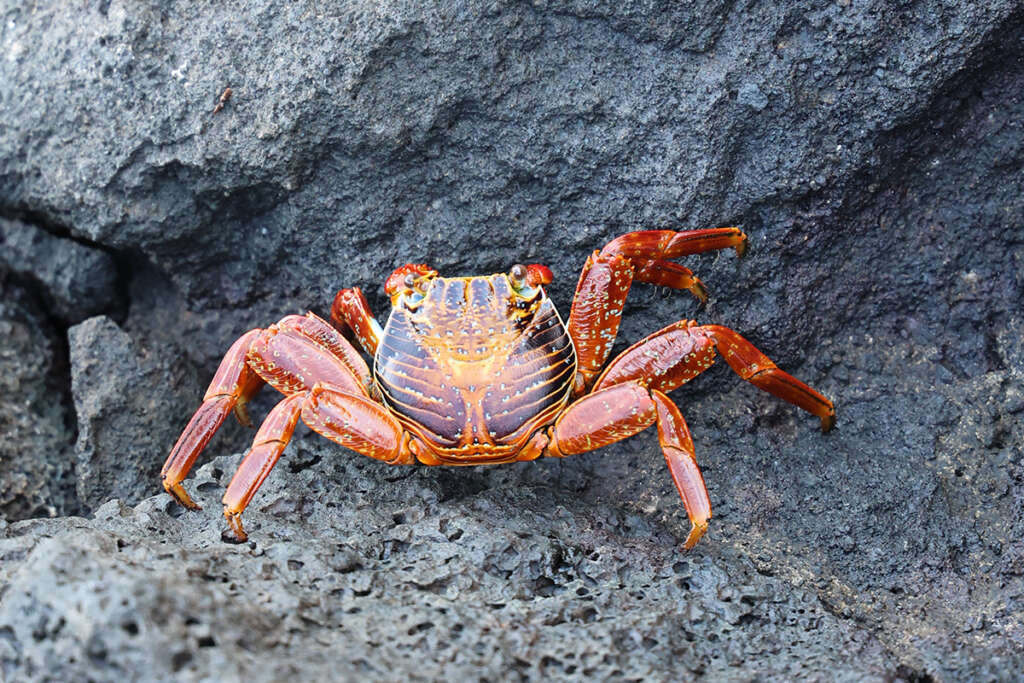
Sally Lightfoot crab at Tagus Cove in the Galapagos Islands. Photo © Dandelion Chandelier.
Graffiti in the Galapagos Islands – ugh!
Seeing graffiti on these ancient cliffs is jarring. The Galapagos National Park authorities prohibit it now, but up until the late 1970’s, it was common for sailors to leave a record of their landings.
The oldest of these marks are carved by hand into the stone, and therefore less jarring visually. Starting in the mid-20th century, though, many visitors left their mark on the cliffs – including a film crew from the Disney company.
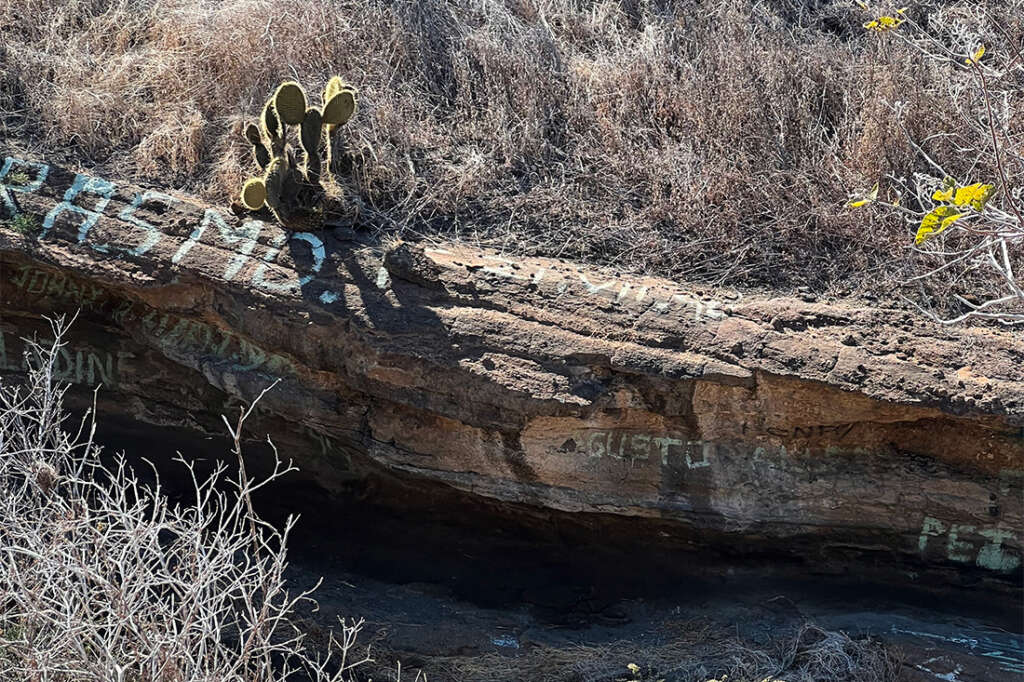
Graffiti in the Galapagos Islands. Photo © Dandelion Chandelier.
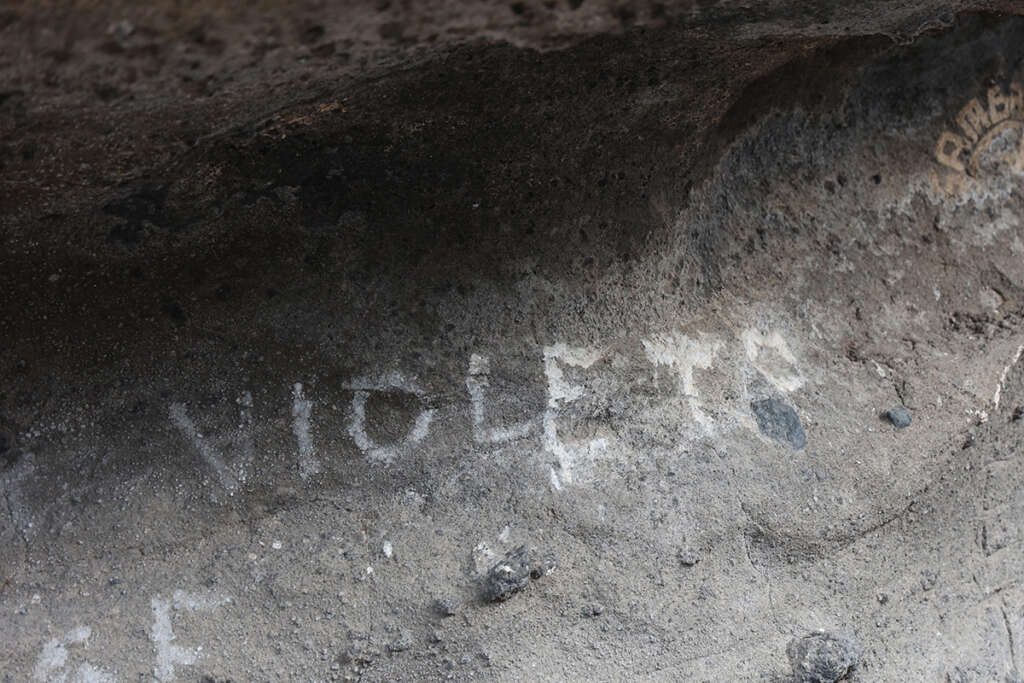
Graffiti at Tagus Cove in the Galapagos Islands. Photo © Dandelion Chandelier.
“Incense trees”
The most common tree in the Galapagos Islands, the Palo Santo, is colloquially known as the “incense tree.” It produces a wet sap that is used in churches throughout Ecuador. The trees are dormant during the transition from the rainy season to the dry season. While they provide a dramatic and architectural backdrop, they’ll be lush and green within weeks of the start of the dry season.
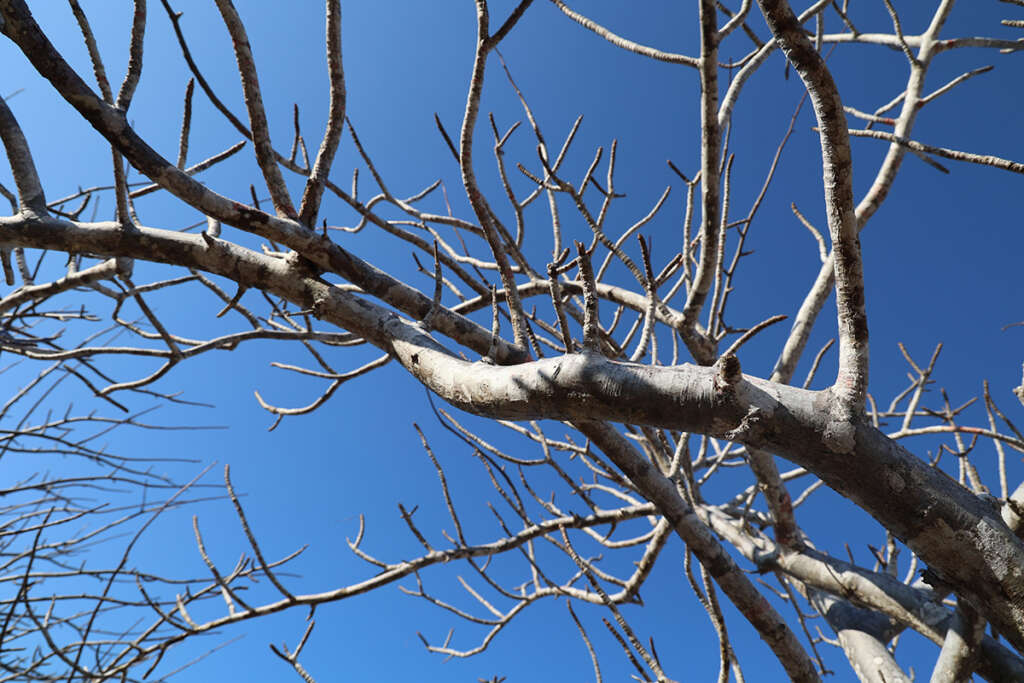
Palo Santo trees at Darwin Lake in the Galapagos. Photo © Dandelion Chandelier.
Finches
The wildlife of the Galapagos tends to fall into just a few categories, given the unusual topography and climate. For example, there are no large mammals anywhere in the archipelago. The top of the food chain is the hawk.
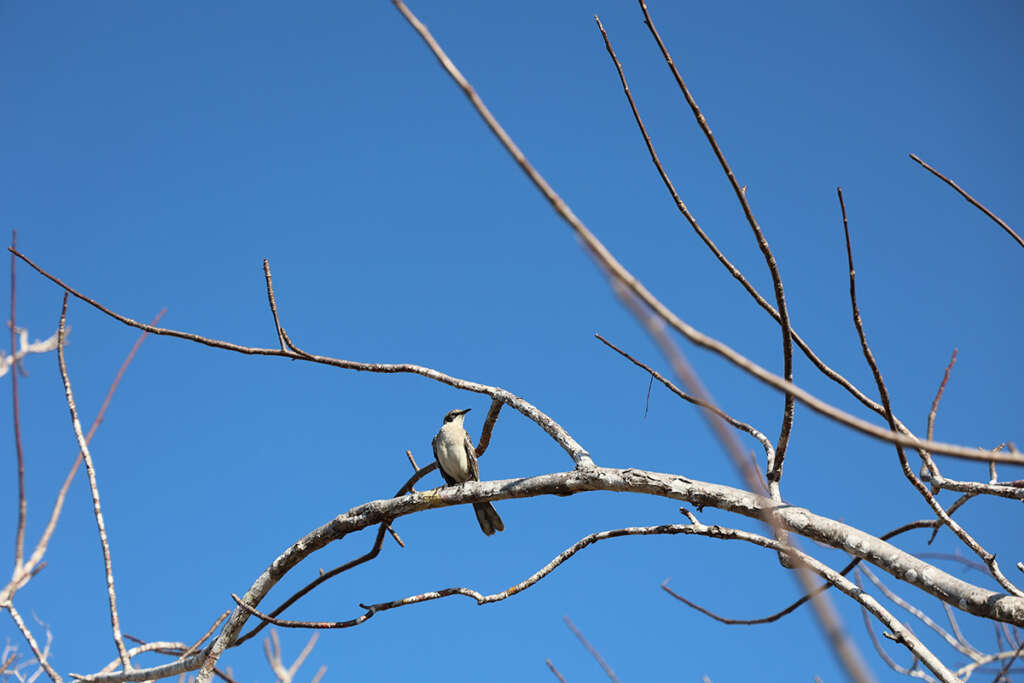
Photo © Dandelion Chandelier.
When Charles Darwin first visited Isabela Island, he spotted flocks of small birds that he mistakenly thought were wrens. Upon his return one of his colleagues informed him that these birds were actually finches. Ground and tree finches are plentiful on this part of Isabela Island.
White and Yellow Flora
There’s very little flora in the Galapagos Islands because there are no natural pollinators. No bees, no hummingbirds. The small number of floral species are self-pollinating. As a result, the limited number of flowers are all white and yellow, because they don’t “need” bright colors like red and pink to attract pollinators.
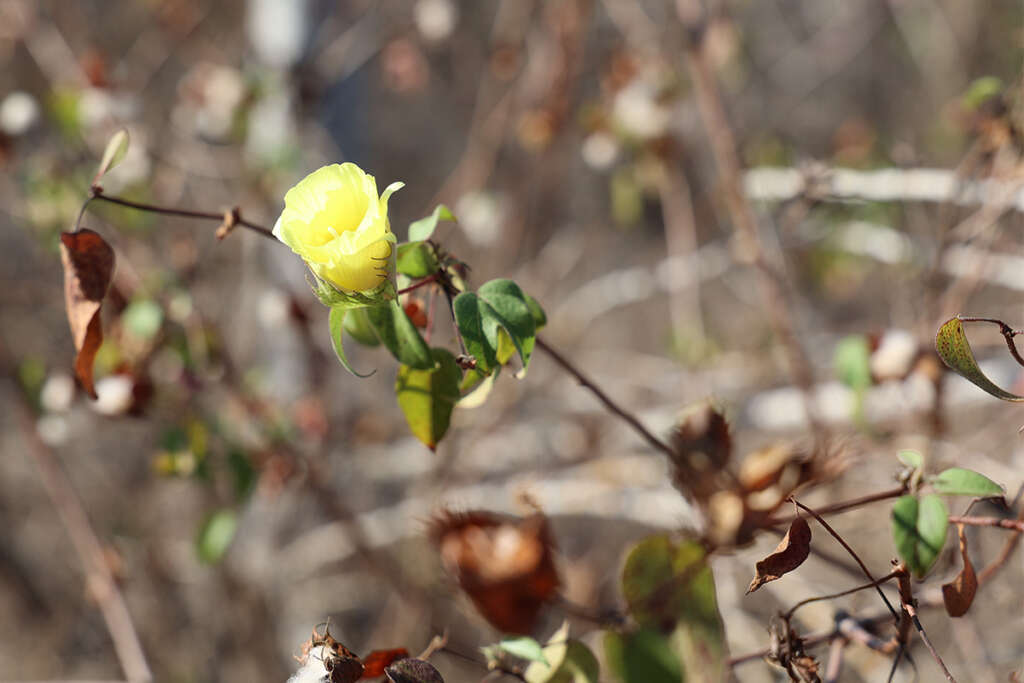
Photo © Dandelion Chandelier.
Darwin Lake
Darwin Lake is a highly salty body of water – similar in many respects to the Dead Sea. There is no connection between the ocean and this body of water, and the high saline content means that there is no aquatic life to spot. Perhaps as a result of the salt content, the colors of the lake are stunning, as is the dramatic pitch of the surrounding cliffs.
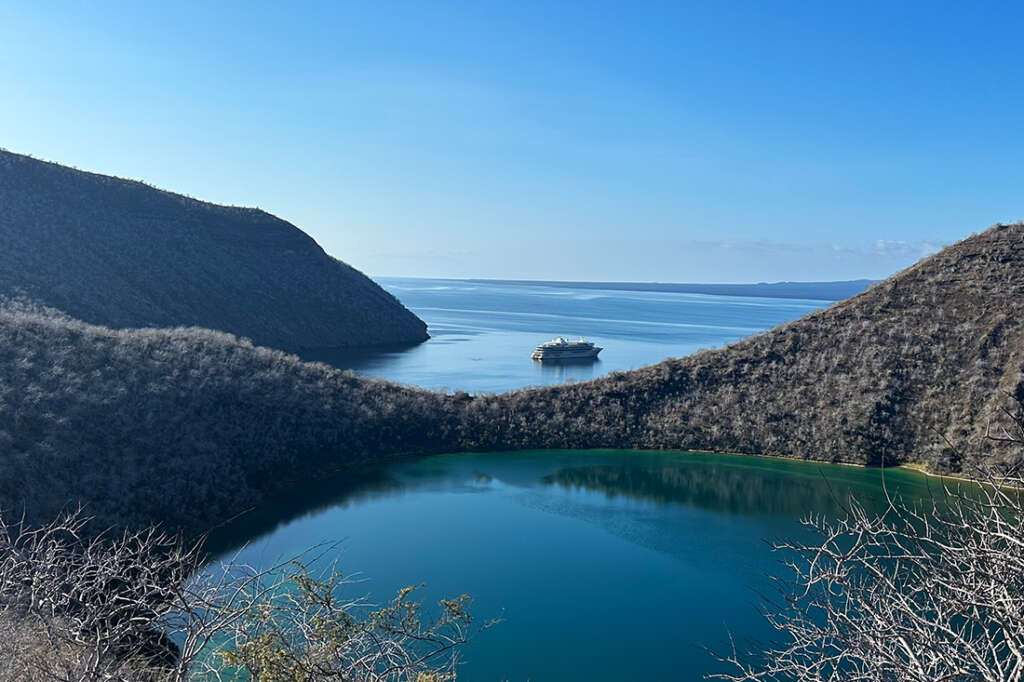
Darwin Lake and Tagus Cove in the Galapagos Islands. Photo © Dandelion Chandelier.
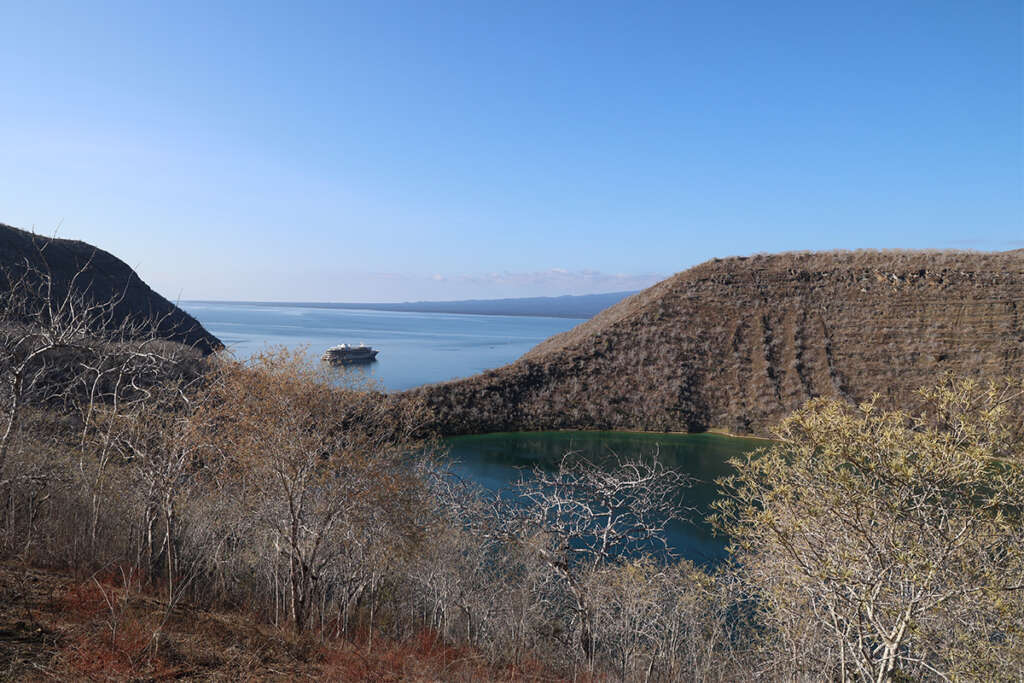
Photo © Dandelion Chandelier.
It’s also pretty thrilling to realize that Charles Darwin himself once walked these same forests on his first trip to the region.
the view from the top
The reward for persevering and reaching the summit of the trail is a spectacular view of Fernandina Island and four of the six volcanos on Isabela Island.
And bragging rights, of course.
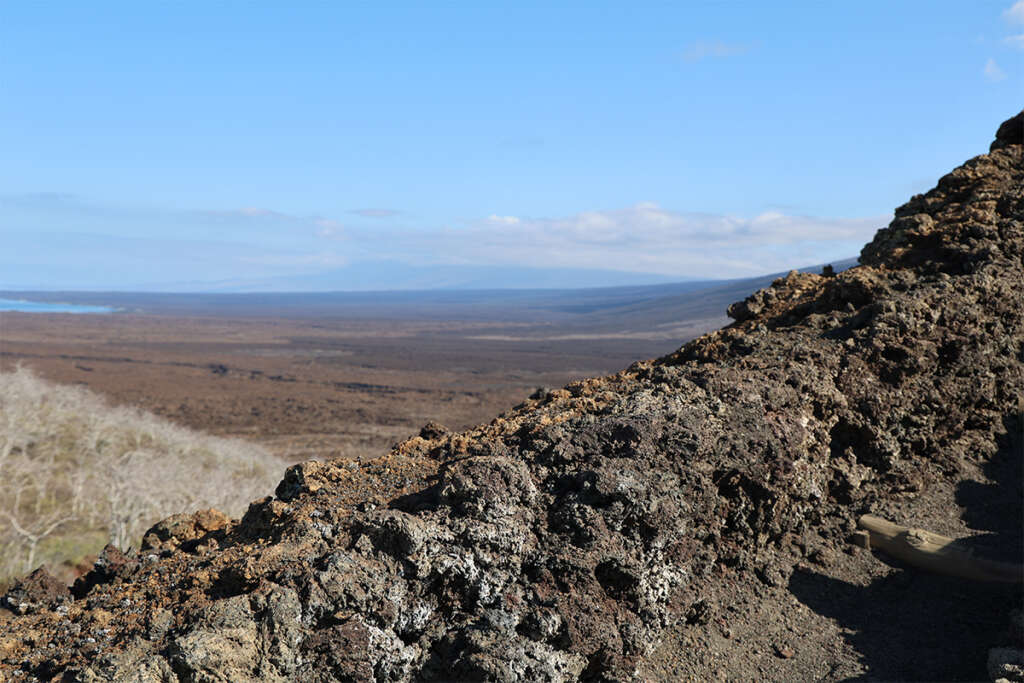
Hike to the summit at Tagus Cove and Darwin Lake in the Galapagos. Photo © Dandelion Chandelier.
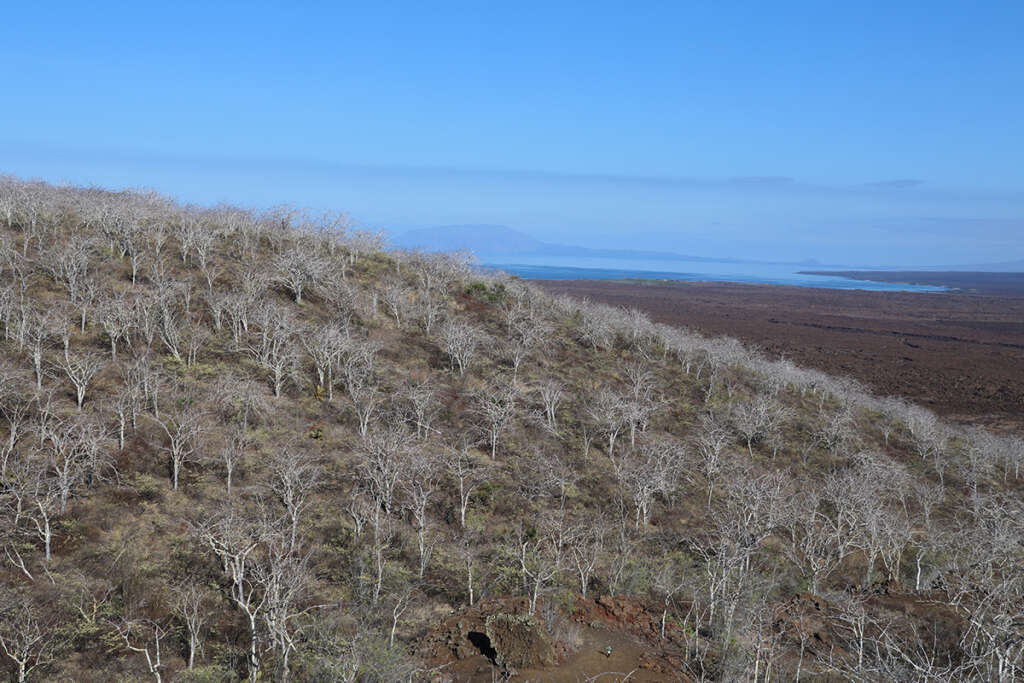
Photo © Dandelion Chandelier.
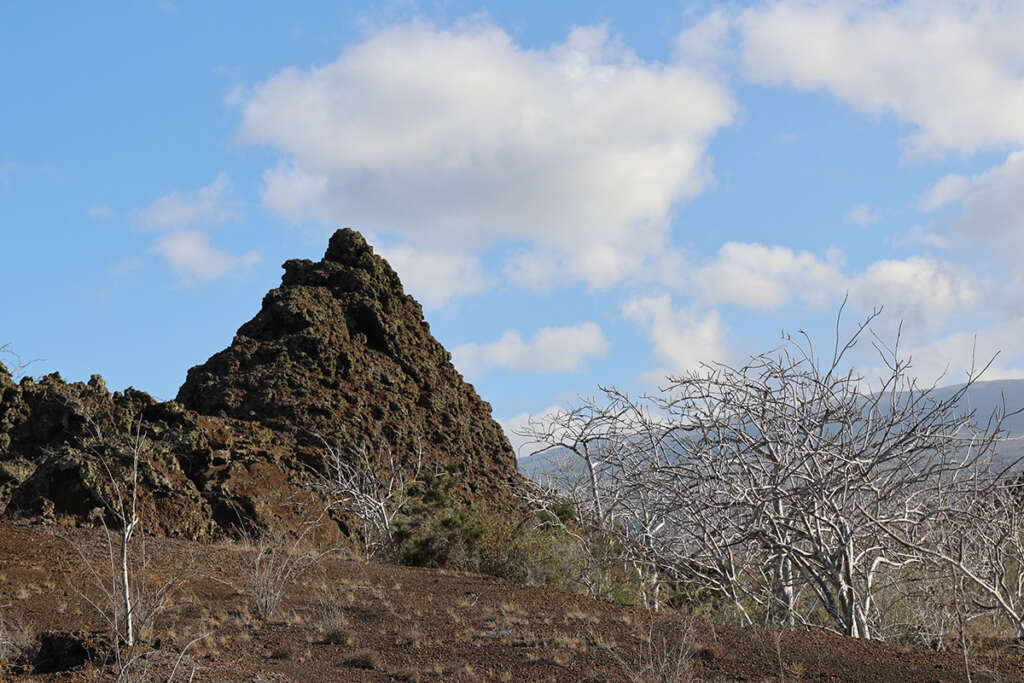
Summit at Darwin Lake and Tagus Cove in the Galapagos. Photo © Dandelion Chandelier.
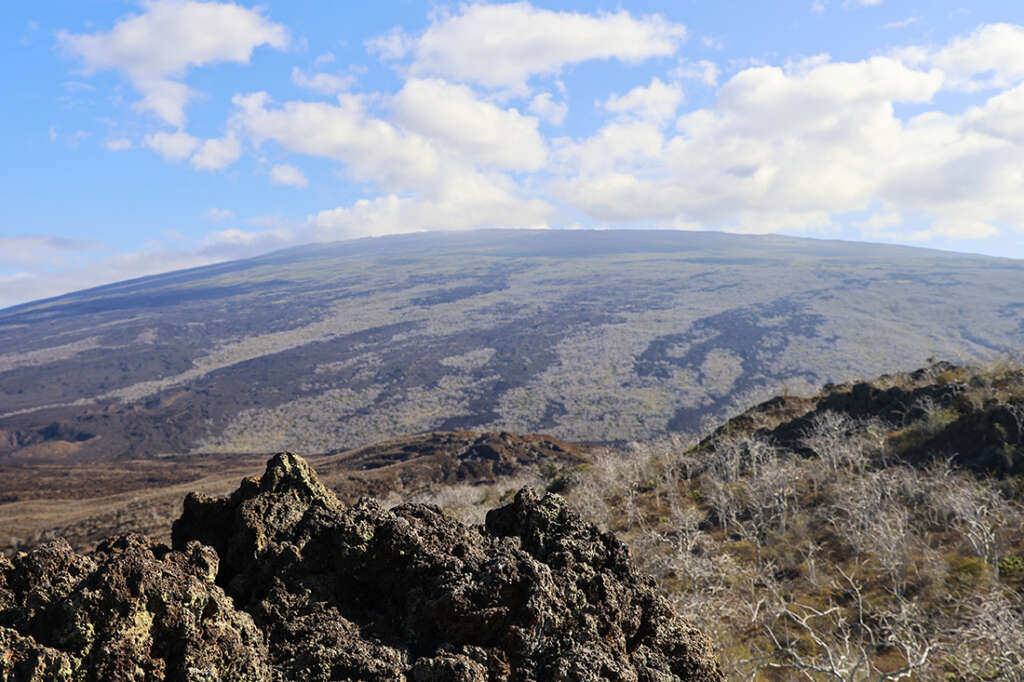
Photo © Dandelion Chandelier.
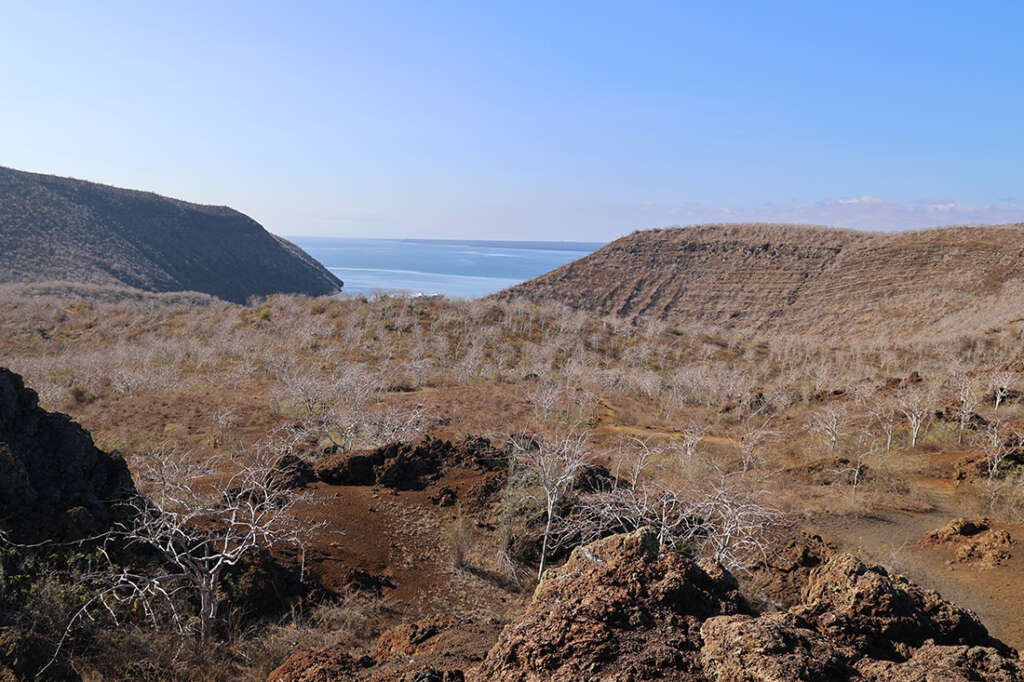
Photos from Tagus Cove and Darwin Lake in the Galapagos. Photo © Dandelion Chandelier.
a hike at tagus cove and darwin lake in the Galapagos
Those are some of our best photos from hike at Tagus Cove and Darwin Lake in Galapagos, home to a forest of incense trees, finches and over 100 years of graffiti. Thankfully, the rules prohibit any further graffiti – and the view from the top is absolutely magnificent. If you have the opportunity, definitely go, dear reader. Just leave the spray paint at home.
